This February, Assam, once a periphery state jabbed with a history of insurgency and restlessness, saw an enduring light as dignitaries led by none less than the Prime Minister Narendra Modi himself gathered in Guwahati to raise the curtains of the landmark Advantage Assam 2.0: Investment and Infrastructure Summit.
A two-day event that has firmly positioned Assam on the national and global economic stage, the summit witnessed the convergence of industry titans, global envoys, and policymakers, all drawn by the promise of Assam’s burgeoning potential.
The inaugural ceremony, also graced by Chief Minister Dr. Himanta Biswa Sarma, External Affairs Minister Dr. S. Jaishankar, and a host of other dignitaries, underscored the strategic importance of Assam in India’s economic landscape.
The Advantage Assam 2.0 summit marked a significant milestone in Assam’s journey towards economic growth and development with participation from global investors, industry leaders, and policymakers. It resulted in investment proposals totalling almost `2.81 lakh crore. This is a significant achievement for a state that was once considered to be on the margin of India’s development map.
Prime Minister Narendra Modi spoke about Assam’s rich industrial legacy and its promise to emerge as a leader in the country’s industrial landscape. He also lauded Assam’s rich industrial heritage and its dynamic shift towards technology and manufacturing.
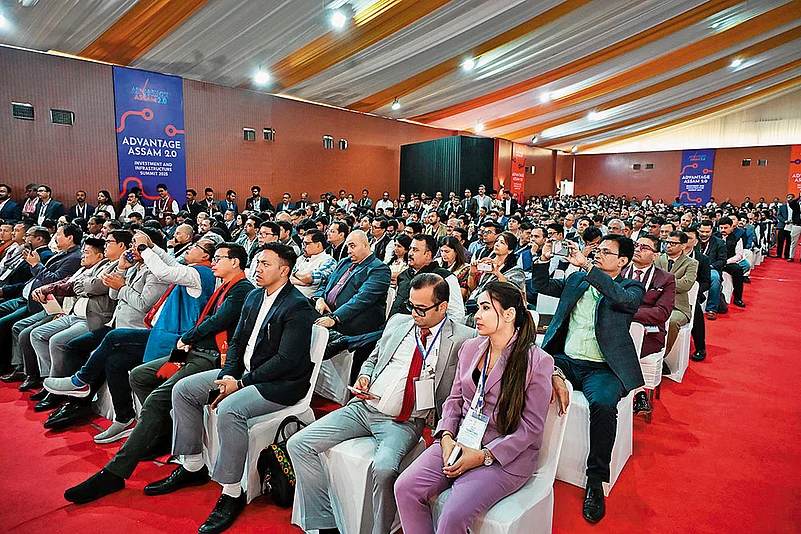
The Advantage Assam 2.0 Investment and Infrastructure Summit, held in Guwahati, marked a historic moment in Assam’s economic journey. The summit was a testament to the state’s evolving industrial landscape and strategic importance within India’s growth trajectory.
During his keynote address, Prime Minister Modi emphasized Assam’s transformation under his government, stating, “Advantage Assam is not just a summit; it is a grand campaign to connect the world with Assam’s potential and progress. This summit symbolizes Assam’s journey from being a land of immense natural beauty to becoming the nucleus of India’s industrial revolution. With bold reforms, investment-friendly policies, and proactive governance, Assam is now the land of limitless possibilities.”
PM Modi further stressed Assam’s integral role in India’s Act East Policy, which aims to establish India as a dominant force in trade and connectivity with Southeast Asia. “For centuries, Assam has been a vital corridor for trade and commerce. With infrastructure upgrades, new connectivity corridors, and strategic partnerships, we are bringing back its former glory,” he remarked.
The Prime Minister highlighted the massive investments and infrastructure growth that Assam has witnessed. He stated, “In the last decade, Assam’s economy has grown at an unprecedented pace. The Gross State Domestic Product (GSDP) has surged, infrastructure projects have doubled, and connectivity has expanded through new roads, railways, and air routes. Today, Assam is at the forefront of India’s growth story.”
Prime Minister Modi also emphasized the importance of Assam as a bridge between India and Southeast Asia, aligning with the government’s broader vision for regional economic integration. He said, “Assam is no longer just a northeastern state; it is the gateway to the ASEAN region. This summit is not just about investment; it is about positioning Assam as a key player in global trade and commerce.”
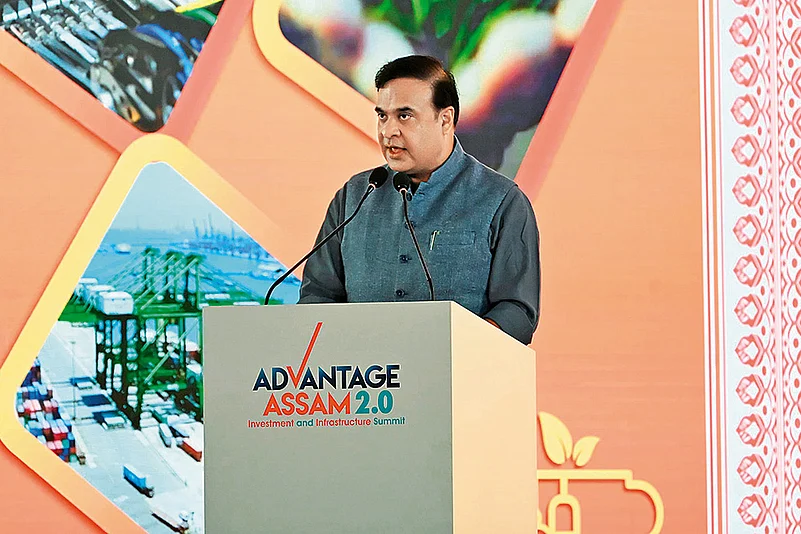
A Vision for a Developed Assam
Chief Minister Himanta Biswa Sarma, echoing this sentiment, called the summit a “landmark event” in Assam’s industrial history. “With the Prime Minister’s blessings, Advantage Assam 2.0 will propel the state into an era of accelerated growth and investment-driven prosperity. For too long, the Northeast was perceived as a remote region, but today, Assam is at the heart of India’s economic and trade expansion. We invite global investors to be part of this transformation,” he stated.
He further elaborated on Assam’s rich industrial legacy, particularly its tea, oil, and coal industries, which have historically contributed to India’s economic strength. “Assam’s tea industry put India on the global map. Oil was first discovered in Assam, and we have always been a leader in natural resource utilization. Now, we are diversifying, and technology-driven growth will define the next chapter of Assam’s industrial story,” he added. Union Minister Sarbananda Sonowal, who played a crucial role in organizing the summit, stated, “The Advantage Assam Summit is a major milestone in our vision for a Viksit Bharat (Developed India). Assam, with its immense natural resources, skilled workforce, and business-friendly policies, is ready to become the gateway to Southeast Asia.”
Sonowal emphasized the need for investor confidence, citing Assam’s stable governance, economic policies, and security as major attractions. “The days of insurgency and unrest are behind us. Today, Assam is one of the most peaceful and progressive states in India. Our government is committed to providing a secure and business-friendly environment for investors,” he said.
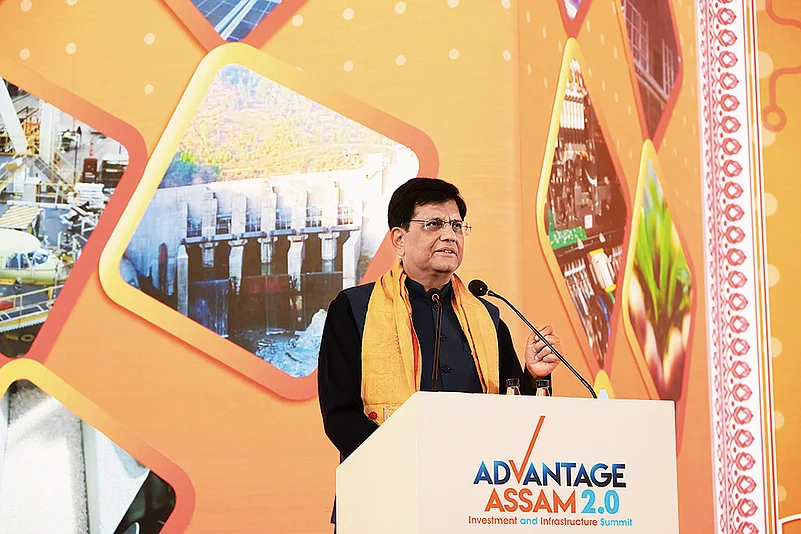
Minister of Commerce and Industry Piyush Goyal underscored the importance of Assam’s industrial ecosystem and its readiness to host global businesses. “The government is committed to ensuring that Assam’s industrial infrastructure, financial ecosystem, and policy framework become benchmarks for investment readiness. We are providing customized incentives and policy support to industries that choose to invest in Assam.”
Goyal further stated that Assam’s economic transformation is not just about industry but also about inclusive growth. “When we invest in Assam, we are not just investing in factories and infrastructure. We are investing in people, in jobs, in skill development, and in a brighter future for the youth of Assam,” he said.
The Advantage Assam 2.0 Summit, with its large-scale participation from industrialists, policymakers, and diplomats, demonstrated that Assam has arrived on the national and global investment map. The summit sent a clear message that Assam is ready for next-level industrialization, infrastructure expansion, and technology-driven growth.
Prime Minister Modi concluded his speech by urging investors to capitalize on Assam’s growth momentum. “This is the right time to invest in Assam. The policies are favourable, the government is proactive, and the opportunities are immense. We invite the world to come, invest, and grow with Assam,” he stated.
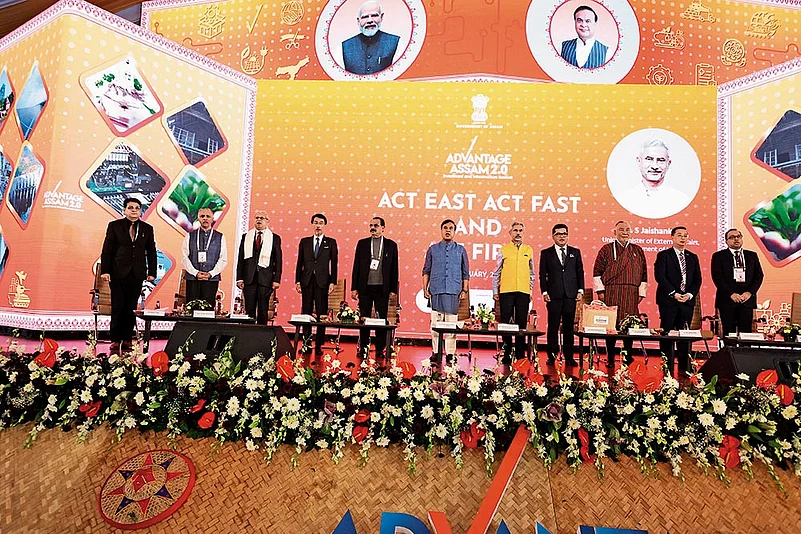
Building Bridges: Expanding Domestic and Global Outreach
Assam’s meteoric rise as a premier destination for business and industrial investments is not an overnight phenomenon — it is the result of a well-planned, multi-pronged outreach campaign led by the state government. In preparation for the Advantage Assam 2.0 summit, Assam’s leadership embarked on an extensive journey, engaging with stakeholders both domestically and internationally to showcase the state’s immense potential.On the domestic front, the state government organized over 100 Business-to-Business (B2B) meetings and 240 Business-to-Government (B2G) meetings across major Indian cities such as Ahmedabad, Bengaluru, Hyderabad, Kolkata, Mumbai, and New Delhi. These meetings were meticulously arranged to create direct dialogue between Assam’s investment authorities and top industrial players from across the country. This campaign attracted more than 2,100 domestic participants, reflecting a strong national interest in the opportunities that Assam offers.
Union Minister Piyush Goyal, speaking during one of these roadshows, emphasized, “We are witnessing unprecedented interest from Indian businesses. Assam is no longer perceived as a remote region; it is emerging as a vibrant industrial hub that can drive growth across sectors such as manufacturing, logistics, and technology.” Such statements resonated widely, as the outreach efforts made it clear that the economic narrative of Assam was being redefined on the national stage.
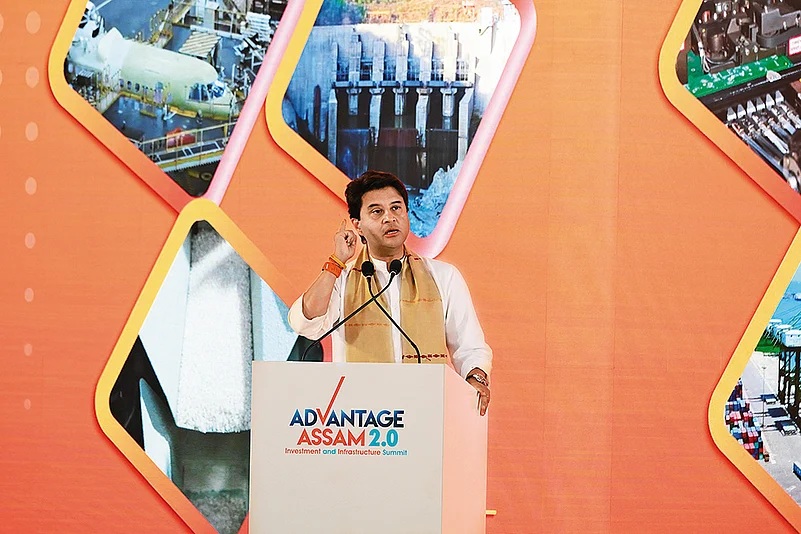
In tandem with these domestic initiatives, Assam’s government executed an aggressive international outreach strategy. More than 180 meetings were held with stakeholders from countries like Japan, Malaysia, the Republic of Korea, Singapore, Thailand, the United Kingdom, and the United Arab Emirates. These sessions, which included both high-level bilateral discussions and informal networking events, allowed international investors and diplomats to gain first-hand insight into Assam’s potential. The outreach not only highlighted key sectors such as semiconductor manufacturing, clean energy, and infrastructure development but also emphasized Assam’s unique locational advantage as the gateway to Southeast Asia.
A particularly notable aspect of the international engagement was the series of 35 diplomatic interactions. These engagements, involving ambassadors and high commissioners, underscored Assam’s commitment to forging strong bilateral ties. For instance, during one of these meetings, Japan External Trade Organization (JETRO) representatives expressed their enthusiasm for exploring joint ventures in high-tech manufacturing and renewable energy projects. As Dr. S. Jaishankar, India’s External Affairs Minister, remarked, “Assam is at the confluence of history and opportunity. Our outreach efforts are building bridges that will not only enhance trade but also foster cultural and technological exchanges that are crucial in today’s interconnected world.”
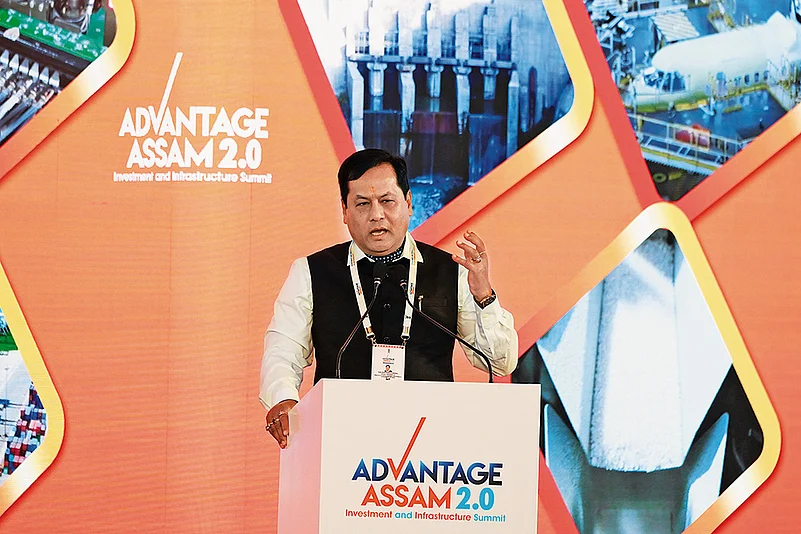
Transformative Impact
To amplify these efforts on a global scale, the Ministry of External Affairs announced the launch of “Assam Week” organized through Indian embassies in key cities around the world, which will serve as a dynamic platform to exhibit Assam’s rich cultural heritage and burgeoning economic potential. The initiative is designed to attract international media attention, provide a forum for dialogue with global investors, and solidify Assam’s brand as a destination where tradition meets modernity. Diplomatic missions and bilateral chambers have lauded this initiative as a progressive step in projecting Assam’s strategic importance to the world.
The comprehensive outreach strategy did not merely involve meetings and events — it was a deliberate exercise in building a robust ecosystem of trust and cooperation. In major Indian cities, the face-to-face interactions allowed domestic investors to witness the state’s readiness to adopt world-class industrial practices. Simultaneously, international meetings helped dispel old myths about the Northeast being an isolated region, replacing them with narratives of rapid transformation, progressive policies, and infrastructural breakthroughs.
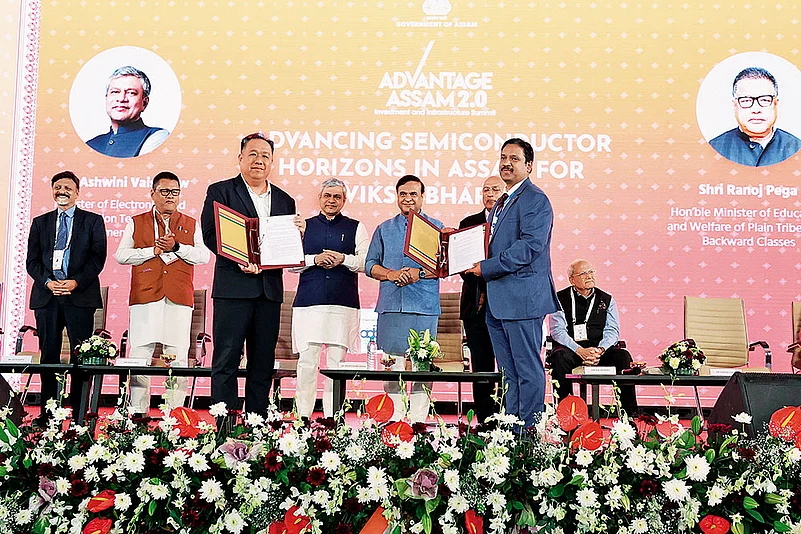
At the Advantage Assam 2.0 summit held in Guwahati, these extensive outreach efforts culminated in an overwhelming show of support. The summit was enriched by the participation of over 2,100 domestic and 1,100 international delegates who had been engaged through these prior outreach programs. The face-to-face interactions during the meetings built a foundation of trust, which translated into robust discussions and concrete investment commitments during the summit.
Moreover, the state government’s commitment to transparency and proactive facilitation further reassured investors. By establishing streamlined processes for approvals and by setting up dedicated investor facilitation cells, Assam demonstrated that it is ready to convert interest into tangible development outcomes. As a result, the summit not only became a forum for discussions but also a launchpad for transformative projects that are expected to generate significant economic growth in the coming years.
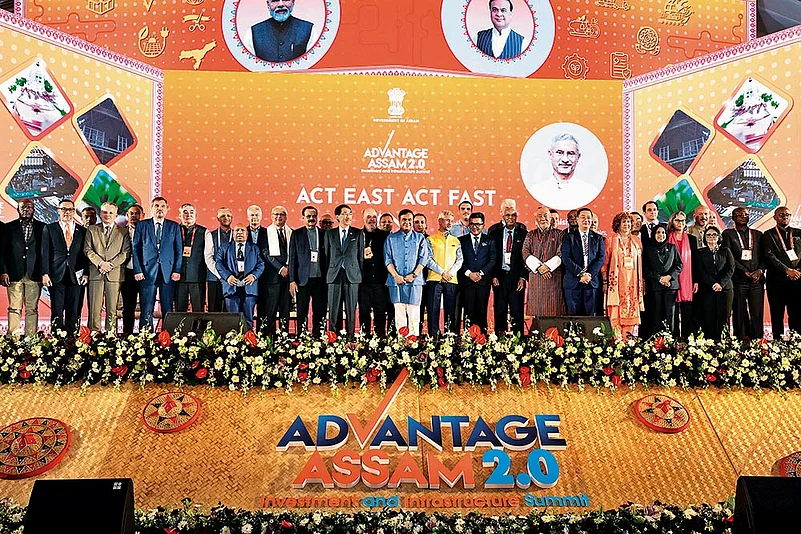
Global Participation: A Testament to Assam’s Appeal
The Advantage Assam 2.0 summit was a global spectacle that firmly established Assam’s position on the international investment map. With 75 countries / bilateral agencies, the summit served as a powerful statement that the Northeast is no longer a hidden gem but a vibrant hub of opportunity. More than 67 heads of missions and their representative engaged in high-level discussions, setting the stage for transformative collaborations that transcend geographical boundaries.
This global participation is a true testament to Assam’s emerging appeal as a destination for business and industrial investments. Representatives from 9 key partner countries — including Australia, Bhutan, Germany, Indonesia, Japan, Malaysia, Singapore, Thailand, and the United Kingdom — arrived to explore mutually beneficial avenues. Their presence was not just symbolic; it was a clear signal of trust and optimism about Assam’s future as a gateway to Southeast Asia and beyond.
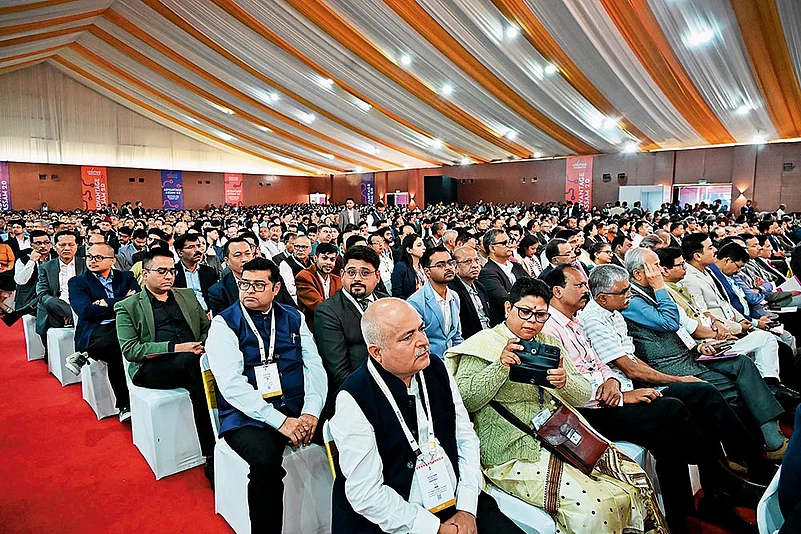
International delegates, numbering over 200 from Asia, Europe, Africa, Australia, and the Americas, converged on Guwahati, drawn by the promise of a burgeoning investment landscape and a state poised for rapid industrial transformation. These delegates came from diverse sectors such as technology, renewable energy, manufacturing, and infrastructure, each seeking to tap into Assam’s unique blend of natural resources, strategic location, and progressive policy framework.
In one of the high-profile diplomatic engagements, representatives from Japan and Singapore highlighted the strategic advantages that Assam offers in terms of connectivity and resource potential. They remarked, “Assam’s geographical position and forward-thinking policies make it an ideal bridge between India and Southeast Asia. The summit has opened up unprecedented opportunities for technology transfer and industrial cooperation,” echoing sentiments shared by many international stakeholders. This sentiment was echoed across various meetings, where dialogues centred on how Assam’s industrial ecosystem can be integrated into global supply chains.
An Invitation to Investors
67 heads of missions and their representative underscored the high level of diplomatic interest in Assam. Ambassadors and high commissioners engaged in in-depth discussions on bilateral trade, investment incentives, and cultural exchange programs. These diplomatic dialogues not only bolstered Assam’s image as an investment-friendly state but also paved the way for future collaborations in sectors like semiconductor manufacturing, renewable energy, and digital innovation. For instance, during a bilateral meeting, the Ambassador of Germany praised Assam’s robust infrastructure and innovative policies, noting, “Assam is evolving rapidly, and its strategic initiatives are setting a benchmark for emerging markets worldwide.”
The presence of 12 bilateral chambers further enriched the summit’s dynamics. These chambers, representing business communities from countries like the United Kingdom and Indonesia, provided platforms for networking and direct engagement with Assam’s top industrial leaders. Their participation signified a bridge between international business practices and local industry standards, fostering a collaborative environment where ideas could flourish into actionable projects. Such interactions helped dispel outdated notions about the Northeast and replaced them with narratives of dynamic growth and vibrant industrialization.
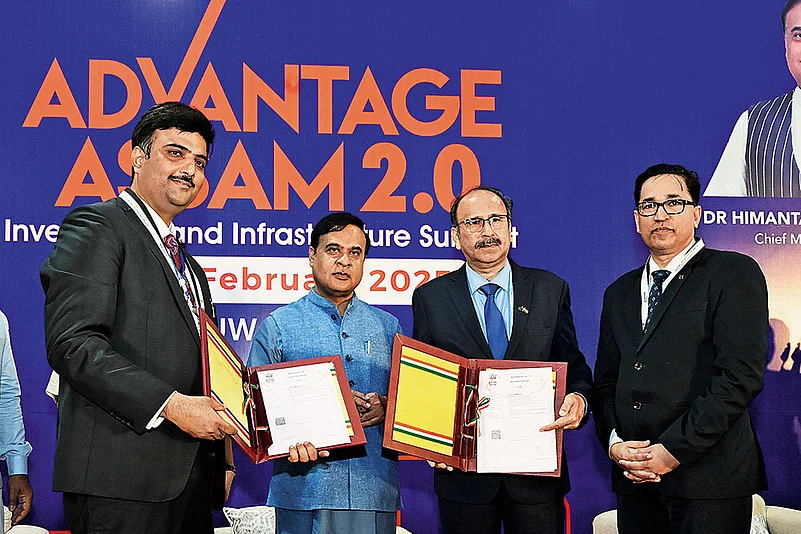
Moreover, the global participation was not limited to formal meetings; it also extended to cultural and networking events that allowed international delegates to experience the rich heritage and vibrant traditions of Assam. During these events, delegates witnessed first-hand the blend of modern industrial prowess and cultural richness—a duality that positions Assam uniquely on the global stage. They observed that Assam’s investment landscape is not just about economic figures but also about the people, the culture, and the promise of sustainable development.
The significant international turnout had a direct impact on the summit’s overall success. Investment proposals from multinational corporations and high-caliber institutions poured in, reinforcing the state’s reputation as a prime destination for industrial and infrastructural investment. The summit’s platform allowed Assam to showcase its advanced policies, strategic location, and rich resource base, which in turn attracted interest from global giants in sectors ranging from oil and gas to technology and renewable energy.
Furthermore, the global participation at the Advantage Assam 2.0 summit laid a strong foundation for long-term collaborations. The dialogue initiated at the summit is expected to lead to tangible investment flows, technology transfer, and knowledge sharing. This is particularly significant for sectors like semiconductor manufacturing, where international expertise is crucial for building world-class facilities. Delegates from countries with advanced technology ecosystems have already expressed a keen interest in partnering with Assam’s industries to develop next-generation production capabilities.
The global participation witnessed at the Advantage Assam 2.0 summit is a clear reflection of the state’s appeal and potential as an investment destination. This robust global involvement is instrumental in propelling Assam towards a future where it stands as a dynamic and strategic hub for business, innovation, and sustainable growth. Through these engagements, Assam is not only attracting investment but also cementing its status as a global economic powerhouse, ready to lead the way into a new era of industrial prosperity.
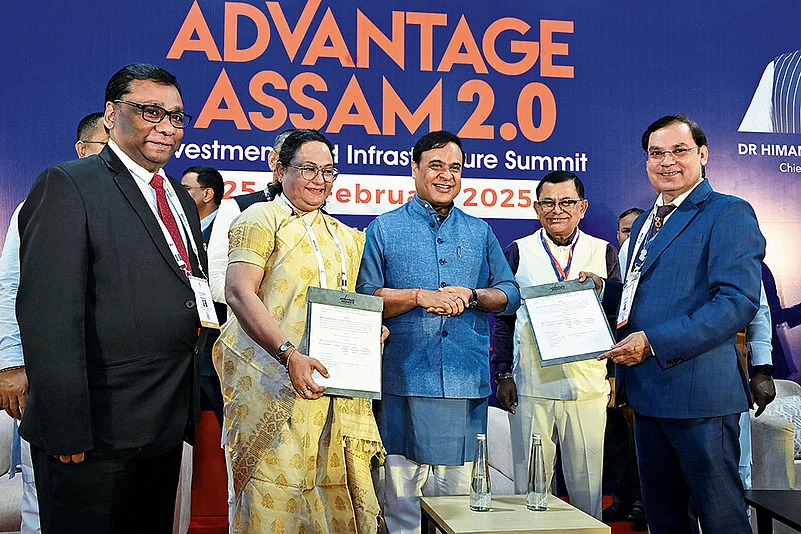
Driving Inclusive Growth
Designed beyond just being a platform for high-level investment announcements, the Advantage Assam 2.0 summit also served as a comprehensive forum to drive inclusive growth across all sectors of the economy. With 20 meticulously curated sessions — 6 ministerial and 14 thematic — the summit showcased Assam’s commitment to fostering growth that benefits all segments of society while propelling the state to the forefront of industrial innovation. At the heart of these sessions were the ministerial segments, attended by six Union Ministers who reinforced the central government’s unwavering support for Assam’s development. Notable among them were Union Ministers Sarbananda Sonowal, S. Jaishankar, and Ashwini Vaishnaw. In sessions themed “I-way to Viksit Assam” and “Indo-Bhutan Economic Cooperation,” these leaders laid out visionary policies under the banner of “Act East, Act Fast and Act First.” As Ashwini Vaishnaw remarked during his address, “Assam is poised to become a hub of technological and industrial innovation. With our focused policies and robust investment in infrastructure, the state will not only unlock its energy potential but also serve as a model for inclusive growth across India.” Such powerful pronouncements resonated with attendees, underscoring the government’s commitment to a growth model that is both expansive and inclusive. The ministerial sessions went beyond policy rhetoric. They delved into concrete strategies for enhancing connectivity — both digital and physical. For instance, discussions on Assam’s Infrastructure Development in Roads, Railways, and Riverine Sectors highlighted ambitious plans for modernizing transportation networks to ensure that the benefits of growth reach even the most remote areas. Union Minister Sarbananda Sonowal noted, “Our investments in infrastructure are not merely about building roads and bridges; they are about connecting communities, fostering regional integration, and ensuring that every citizen has access to the opportunities of a modern economy.” This focus on connectivity is a cornerstone of inclusive growth, ensuring that economic benefits are distributed equitably.
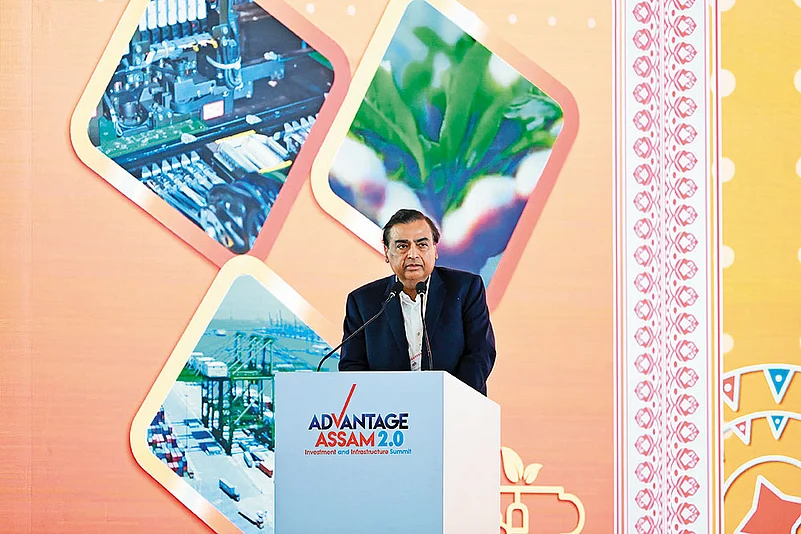
The Pillars
Complementing the ministerial sessions were the 14 thematic sessions, each addressing critical dimensions of Assam’s economic landscape and tailored to drive inclusive development. The thematic sessions were strategically categorized into several clusters:
Economic and Industrial Development: Four sessions focused on strengthening the industrial backbone of Assam. Topics ranged from supporting MSMEs and implementing the One District One Product (ODOP) initiative to exploring opportunities in Aerospace and Defence Manufacturing. One session delved into the immense potential of bamboo—often referred to as Assam’s green gold—alongside discussions on Agarwood processing and value addition. These sessions were crucial in presenting practical pathways for local entrepreneurs and large corporations alike to harness Assam’s unique resources, ensuring that the benefits of industrial growth are shared broadly.
Technology and Innovation: Two sessions were dedicated to fostering innovation through cutting-edge technology. Discussions on the Space and Geospatial Industry and Advancing Biomanufacturing and Bio foundries highlighted how technology can be leveraged to create high-value jobs and elevate Assam’s industrial capabilities. Union Minister S. Jaishankar, emphasizing the role of technology in global competitiveness, commented, “Innovation is the engine of future growth. By integrating advanced technology with traditional industries, Assam is setting the stage for a new era of prosperity that includes every stakeholder.”
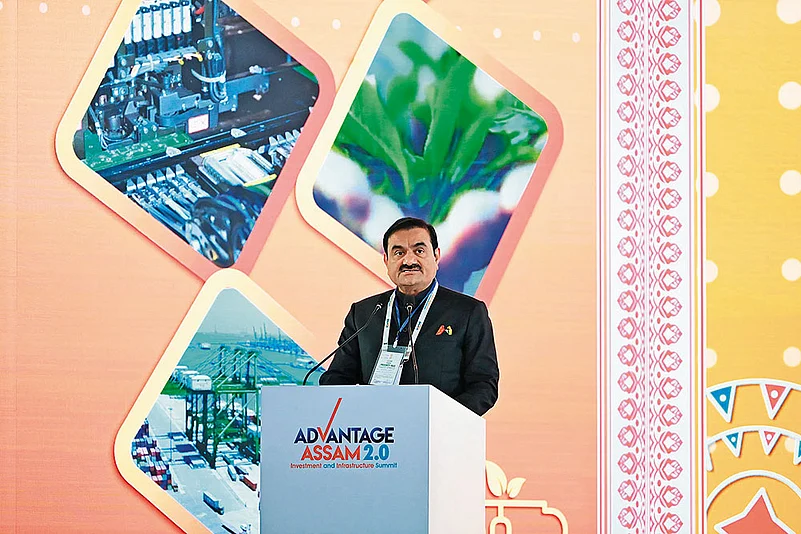
Sustainability and Health: In today’s world, sustainable growth is non-negotiable. Three sessions addressed the urgent need to decarbonize energy production in Assam, transform the health sector, and explore the synergies between traditional sectors like tea production and emerging industries such as fragrances and flavours. These discussions underscored how environmental stewardship and public health initiatives can drive sustainable development, ensuring that economic progress does not come at the cost of ecological balance or public well-being.
Entrepreneurship and Leadership: Four sessions focused on unleashing the entrepreneurial spirit of Assam. These sessions discussed leveraging Multilateral Development Bank (MDB) resources to unlock private sector opportunities, developing robust real estate and urban infrastructure, and nurturing a vibrant startup ecosystem. One of the sessions, titled “200 Years & Growing: Nurturing Assam Tea’s Vision for Global Leadership,” paid tribute to Assam’s iconic tea industry while outlining innovative strategies to propel it onto the global stage. Industry leaders and policymakers alike emphasized that a thriving startup culture, coupled with strong institutional support, would be instrumental in creating a sustainable and inclusive economy.
Tourism Promotion: Finally, one session was dedicated to positioning Assam as a premier tourism destination—a state that offers a compelling blend of natural beauty, cultural richness, and modern infrastructure. This session explored opportunities to develop tourism that benefits local communities, preserves heritage, and attracts global visitors year-round.
Throughout these sessions, the robust attendance of over 14,500 participants was a testament to the strong interest in Assam’s holistic development model. Attendees included government officials, industry leaders, entrepreneurs, and investors who engaged in deep, sector-specific discussions. The sessions fostered an environment where policy ideas could be exchanged, innovative projects were conceptualized, and collaborative partnerships were forged.
The comprehensive agenda of the summit was designed to ensure that every sector—be it technology, health, or traditional industries like tea and bamboo—was integrated into Assam’s growth narrative. This inclusive approach is what sets Assam apart as an investment destination. It is not solely focused on attracting capital, but on building an ecosystem that nurtures talent, drives innovation, and ensures that growth reaches every corner of society.
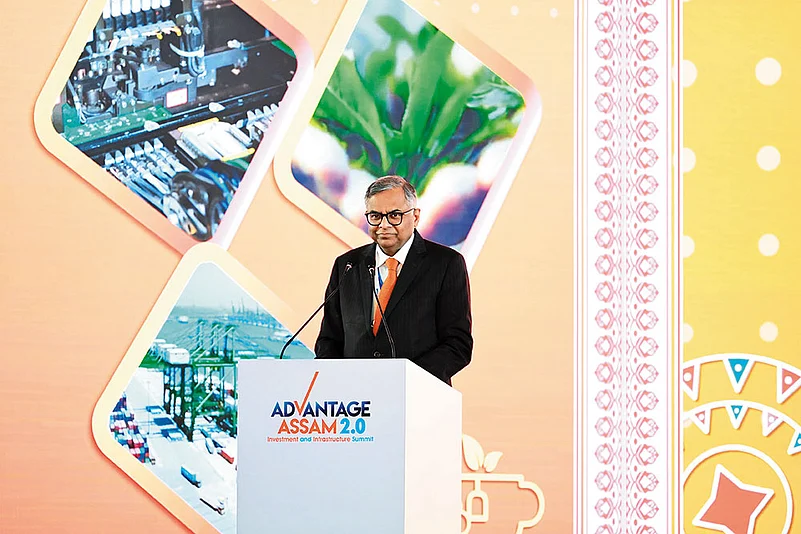
An Exhibition of Potential
The Advantage Assam 2.0 Exhibition emerged as one of the most anticipated segments of the summit, symbolizing not only the dynamic industrial capabilities of Assam but also its cultural vibrancy. Spanning an impressive 87,200 square feet, the exhibition was inaugurated by Prime Minister Narendra Modi, whose presence underscored the high priority accorded to Assam’s growth story at a national level. In his address at the exhibition, PM Modi remarked, “This exhibition is a testament to Assam’s rich industrial potential and its readiness to integrate into the global economic system. Today, Assam stands as a beacon of progress, where cultural heritage meets modern industry.” Such words resonated deeply with the diverse audience, setting the stage for a transformative experience.
At the heart of the exhibition were over 200 exhibitors representing a cross-section of India’s most influential corporates. Major industry players such as Tata, HUL, IOCL, ONGC, Vedanta, Reliance, Adani, GAIL, BCPL, NEEPCO, OIL-NRL etc showcased their cutting-edge technologies and innovative solutions. Their participation was not only a demonstration of confidence in Assam’s economic prospects but also an endorsement of the state’s ability to attract high-calibre investments. These companies brought to the exhibition a blend of global expertise and a commitment to regional development, affirming Assam’s status as a burgeoning industrial hub.
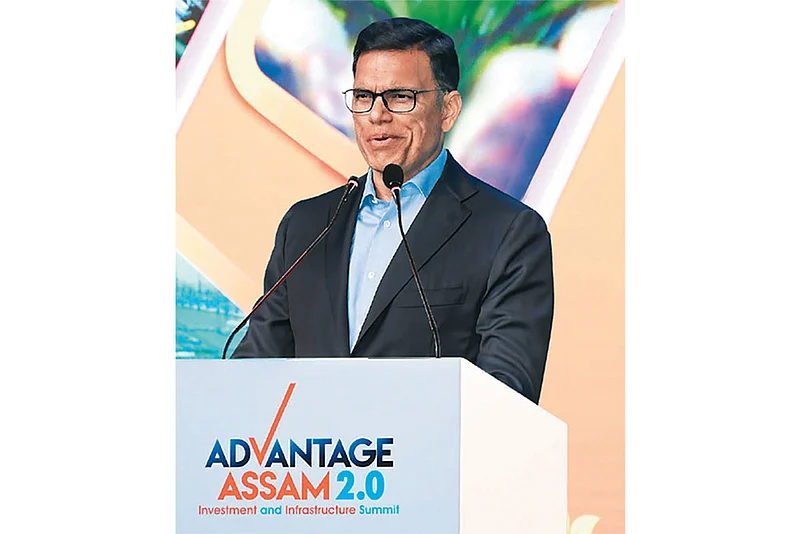
Equally significant was the active participation of 132 MSMEs and start-ups, which highlighted the entrepreneurial spirit flourishing within the state. These smaller enterprises, with their innovative approaches and agile business models, demonstrated that Assam’s growth is inclusive, reaching even the grassroots level. Their presence at the exhibition served as a powerful reminder that Assam’s economic narrative is not solely driven by multinational corporations, but also by home-grown enterprises ready to scale and compete on a global platform. One of the start-up founders shared, “Being here is a validation of our dreams. Assam’s support for start-ups has been tremendous, and this exhibition is our window to the world.”
A key feature of the exhibition was the assortment of themed pavilions, each meticulously designed to showcase specific facets of Assam’s industrial and cultural prowess. The Assam Pavilion, covering over 9,700 square feet, was dedicated to displaying the state’s rich cultural diversity alongside its industrial advancements. Visitors were treated to a vibrant display of Assam’s traditional art, handicrafts, and indigenous technologies, which were seamlessly integrated with modern industrial innovations. This pavilion served as a visual narrative of Assam’s evolution—from its deep-rooted heritage in tea, silk, and bamboo crafts to its modern ventures in semiconductor manufacturing and renewable energy.
Best Foot Forward
Complementing the Assam Pavilion were other specialized pavilions such as the Semiconductor Pavilion, the Energy Pavilion, and the Innovation Pavilion. The Semiconductor Pavilion was a nod to Assam’s rising profile in the high-tech arena, especially with significant investments aimed at establishing world-class semiconductor assembly and testing facilities. Here, industry experts demonstrated the latest in chip manufacturing processes and discussed the state’s potential to become a critical player in India’s tech ecosystem. Similarly, the Energy Pavilion highlighted projects focused on renewable energy, clean power, and energy efficiency—sectors that are set to revolutionize Assam’s industrial landscape in the coming years. Interactive exhibits, live demonstrations, and panel discussions in these pavilions provided visitors with a hands-on understanding of the technological innovations driving Assam’s future.
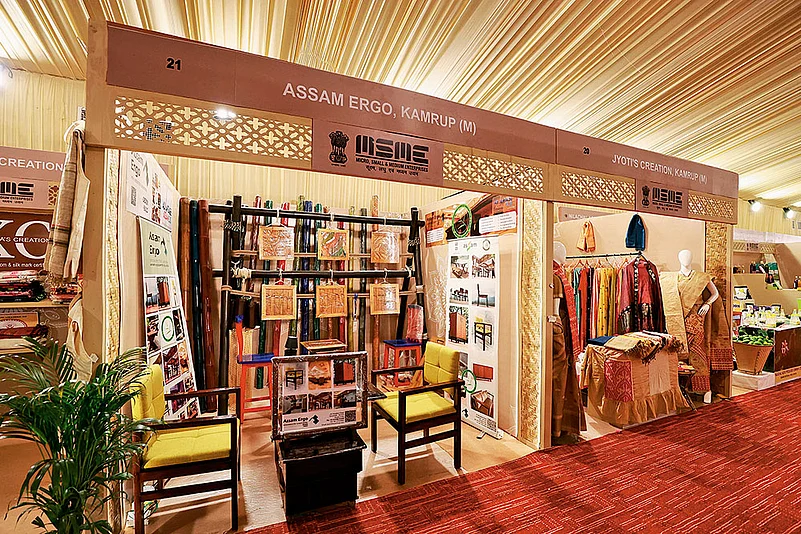
The Innovation Pavilion, on the other hand, was designed to foster an environment of creative collaboration. It served as a platform where startups and established corporations could interact, share ideas, and explore opportunities for joint ventures. This space epitomized the spirit of innovation that is central to the Advantage Assam 2.0 summit, emphasizing that progress in Assam is built on the foundation of continuous innovation and collaboration. Industry leaders from various sectors engaged with local innovators, discussing new business models, digital transformation, and sustainable development strategies that are set to shape the region’s economic future.
Beyond the themed pavilions and the display of products and technologies, the exhibition played a crucial role in feeding into the overall momentum of the Advantage Assam 2.0 summit. It acted as a dynamic platform for networking, where policymakers, industry leaders, investors, and entrepreneurs converged to exchange ideas and forge strategic alliances. The visual and experiential impact of the exhibition helped translate policy announcements and investment pledges into tangible, relatable concepts. For instance, as visitors walked through the Assam Pavilion, they could witness first-hand the convergence of tradition and modernity — a narrative that encapsulates Assam’s unique value proposition as an investment destination.
The exhibition also underscored Assam’s commitment to fostering an ecosystem of inclusive growth. By offering dedicated spaces for MSMEs and startups alongside global corporate giants, the event highlighted the state’s balanced approach towards industrialization. This inclusive model ensures that while large-scale investments are being attracted, there is also significant support for local entrepreneurs and smaller enterprises. As a result, the exhibition not only showcased technological and infrastructural advancements but also celebrated the entrepreneurial spirit that is critical to Assam’s socio-economic fabric.
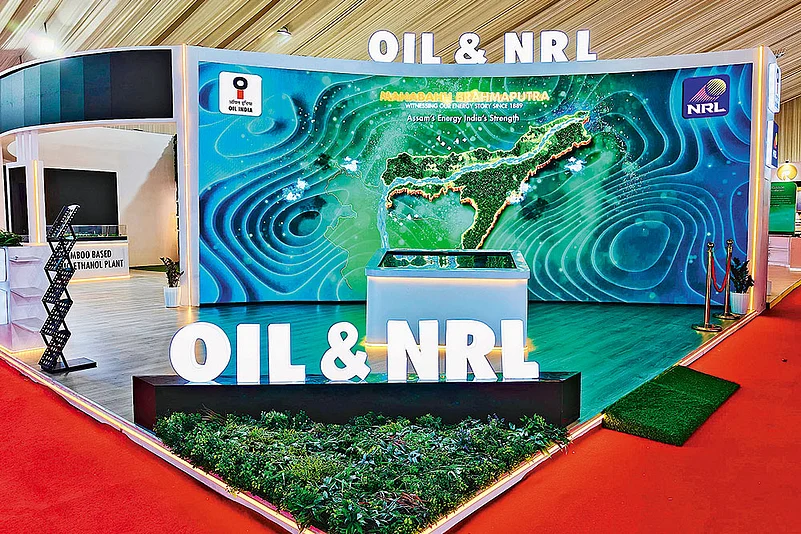
Paving the Way for Growth
The Advantage Assam 2.0 summit was marked by a series of landmark announcements that set the stage for a transformative era in Assam’s economic and industrial landscape. These key announcements, made by top government officials and industry leaders alike, underscore a strategic commitment to large-scale investments and infrastructural enhancements designed to propel the state into a new phase of growth.
At the forefront was the announcement by Prime Minister Narendra Modi regarding the Namrup IV Mega Integrated Urea Project. With an investment of INR 12,000 crores, this project is poised to revolutionize Assam’s agricultural and industrial sectors. The Prime Minister highlighted that the project’s scale would not only boost agricultural productivity but also stimulate downstream industries, creating a ripple effect that would enhance regional economic development. “This project is a game-changer,” Modi stated, emphasizing its potential to transform Assam into a key hub for fertilizer production, which in turn will drive agrarian innovation and support allied industries.
Union Minister Ashwini Vaishnaw delivered a series of detailed announcements that further underscored the state’s infrastructural renaissance. His portfolio of commitments totaled INR 6,300 crores and encompassed a broad range of railway and connectivity projects. Among these were the development of a world-class railway station in Guwahati coupled with a multi-storey IT park, with a dedicated allocation of INR 300 crores. This project is expected to act as a catalyst for urban development and digital transformation in the capital. Additionally, the creation of a Mega Wagon Workshop at Basbari in Bodoland, also valued at INR 300 crores, is set to boost the region’s manufacturing capabilities and enhance logistics efficiency.
Vaishnaw also announced a Mid-life Locomotive Rehabilitation Facility at Lumding for INR 200 crores, a critical step towards modernizing Assam’s aging railway infrastructure. One of the most ambitious proposals was the Bhutan Connectivity project, which involves the construction of a 69.04 km rail line between Kokrajhar and Gelephu, earmarked at a staggering INR 3,500 crores. This project, along with the modernization of 50 railway stations under the Amrit Bharat Station Scheme (INR 1,700 crores) and the development of six new Gati Shakti cargo terminals (INR 300 crores), is set to significantly enhance regional connectivity and cargo movement. Complementing these efforts are the introductions of two new Amrit Bharat trains and two intercity trains connecting Silchar with Guwahati and Guwahati with Agartala, thereby reinforcing Assam’s position as a critical transport nexus.
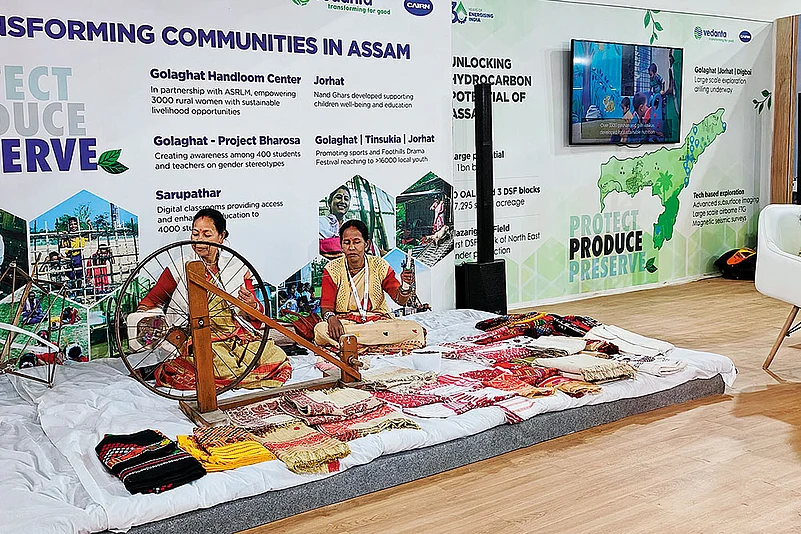
In another major set of announcements, Union Minister Jyotiraditya M. Scindia focused on the telecommunication sector. He unveiled an investment of INR 1,800 crores by BSNL to enhance network infrastructure across Northeast India, ensuring that Assam is equipped with next-generation digital connectivity. Moreover, the launch of a 5G lab at Guwahati University aims to foster research and skill development in emerging telecom technologies, thereby positioning the state as a future-ready digital hub. Minister Hardeep S. Puri, responsible for Petroleum and Natural Gas, announced transformative projects in the energy sector. He revealed that a city gas project, with a Memorandum of Understanding (MoU) worth INR 5,000 crores, had been signed between Adani Total Gas Ltd. and the Government of Assam. Further, a separate MoU worth INR 15,000 crores inked with ONGC is expected to enhance the state’s energy infrastructure significantly, fueling growth in both industrial and residential sectors.
Waterways and more
Maritime and inland connectivity received a boost as well. Union Minister Sarbananda Sonowal, overseeing Ports, Shipping & Waterways, announced the establishment of a Centre of Excellence for Maritime Skilling in Dibrugarh, designed to nurture a skilled workforce for the shipping industry. In addition, he committed INR 4,800 crores over the next five years to develop inland waterways, thereby leveraging Assam’s rich riverine resources for economic benefit.
On the roads and highways front, Union Minister Nitin Gadkari declared an ambitious allocation of INR 80,000 crores for critical infrastructure projects across Assam. This substantial investment aims to overhaul the state’s transport network, enhancing connectivity within the state and with neighboring regions, thereby underpinning all other industrial developments.
The private sector, too, played a pivotal role in the announcements, underscoring a unified vision for Assam’s future. Confidence Industries, under the leadership of Chairman and MD Mukesh Ambani, committed a total investment of over INR 50,000 crores across five priority areas in Assam. Ambani outlined a multi-pronged strategy focusing on digital transformation and AI readiness, clean and green energy (including the development of two world-class hubs to produce 8 lakh tonnes of clean gas CBG), the creation of a mega food park to stimulate the food and consumer market, and a significant expansion in retail and hospitality, including the establishment of a 7 star hotel. He also stressed the importance of cultural and heritage promotion through the Reliance Foundation, particularly emphasizing initiatives to showcase Assam’s rich traditions in bamboo craftsmanship and the silk industry of Sualkuchi.
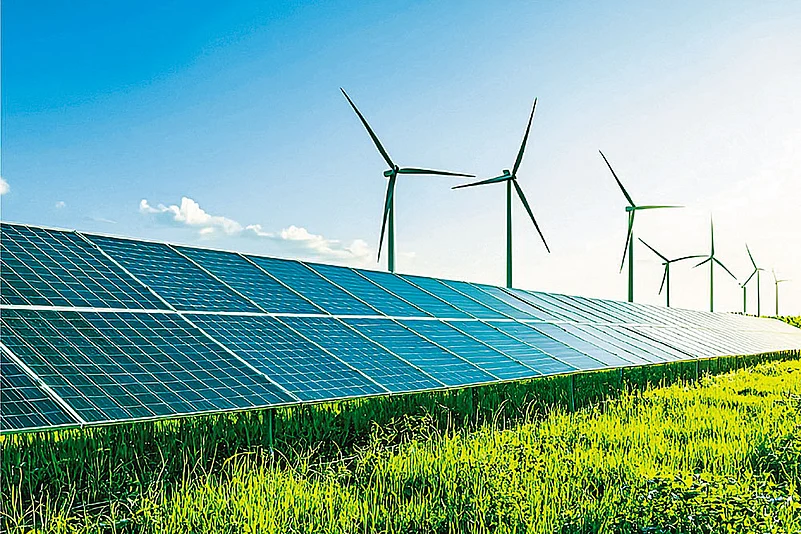
Similarly, Tata Sons, represented by Chairman Natarajan Chandrasekharan, announced plans to invest in another large electronics manufacturing unit, reflecting the Tata Group’s confidence in Assam’s burgeoning tech ecosystem. In parallel, Gautam Adani, Founder and Chairman of the Adani Group, pledged an investment commitment of INR 50,000 crores in Assam. His focus spans across multiple sectors—including airports, aerocity development, defence, cement, and road projects—underscoring a diversified approach to industrial growth.
Adding to the momentum, Chairman of JSW Group, Sajjan Jindal, announced three major projects in Assam, emphasizing investments in energy and infrastructure. His announcements, which include MoUs worth INR 7,000 crores for renewable and thermal energy projects, further cemented the state’s status as a hotbed of industrial activity. Lastly, Vedanta Resources, under the leadership of Chairman Anil Agarwal, declared an investment of INR 50,000 crores. Vedanta’s target is to produce 1,00,000 barrels of oil over the next two years in key regions such as Golaghat, Jorhat, and Sivasagar, a move designed to stimulate downstream industrial growth.
Celebrating Assam’s Legacy: Jhumoir Binondini
At the heart of the Advantage Assam 2.0 summit was a moving celebration of Assam’s rich cultural and economic heritage—the Jhumoir Binondini event. Marking the 200th anniversary of Assam tea, this grand celebration served as a powerful reminder of the state’s enduring legacy and its significant contribution to India’s economic tapestry. The event not only highlighted Assam’s historical role as the birthplace of one of the world’s most renowned teas but also showcased how this legacy is interwoven with modern industrial aspirations.
The tea industry has long been the cornerstone of Assam’s economy, symbolizing not only agricultural excellence but also a vibrant cultural heritage. For over two centuries, Assam tea has captivated the world with its distinctive flavour and quality. At the summit, this legacy was celebrated with unparalleled fervour. The Jhumoir Binondini event brought together more than 8,000 performers from over 800 tea gardens, transforming the summit grounds into a mesmerizing tapestry of traditional music, dance, and folklore. These performers, hailing from the heart of Assam’s tea estates, showcased age-old traditions that have been passed down through generations, vividly portraying the cultural soul of the state.

During the keynote address at the event, Prime Minister Narendra Modi paid a moving tribute to the tea tribes, underscoring their role in shaping Assam’s identity. He remarked, “Assam’s tea is not merely a beverage; it is a symbol of our heritage, resilience, and the collective spirit of our people. Today, as we celebrate 200 years of Assam tea, we honour the legacy of the tea tribes who have been the custodians of this magnificent tradition. Their hard work and unwavering dedication have not only put Assam on the global map but have also laid the foundation for our future.” These words resonated deeply with the audience, bridging the gap between tradition and modernity, and reinforcing the message that Assam’s cultural legacy is an integral part of its growth narrative.
The Jhumoir Binondini event was more than just a cultural celebration; it was a strategic component of the Advantage Assam 2.0 summit, reinforcing the state’s image as a premier destination for both business and industrial investments. By showcasing its rich cultural heritage alongside its industrial prowess, Assam sent a clear message to global investors: the state is a unique blend of tradition and innovation. This juxtaposition creates a robust and attractive investment climate where age-old practices coexist with futuristic technologies. For instance, while investors marveled at the elaborate performances and traditional art forms, they also witnessed state-of-the-art pavilions displaying advancements in sectors such as semiconductor manufacturing, renewable energy, and digital infrastructure.
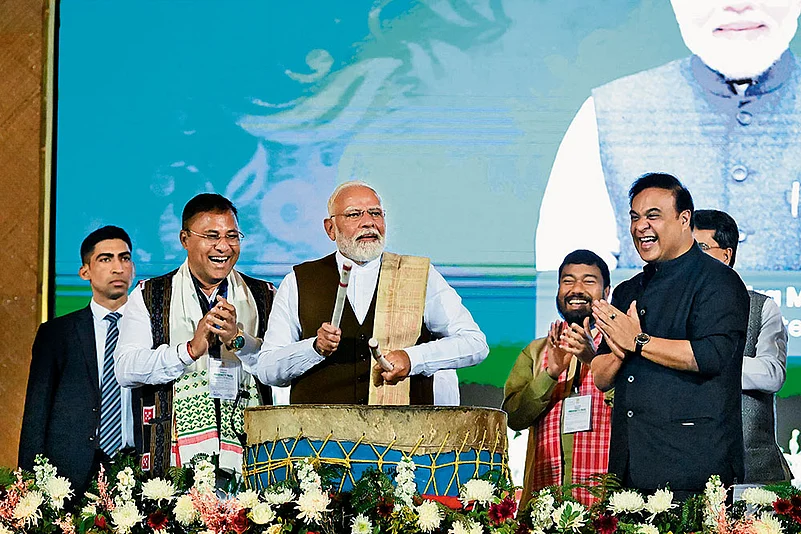
Deep Roots in Assam’s Cultural and Social Fabric
Moreover, the event demonstrated that Assam’s economic model is not solely dependent on large-scale industrial ventures but is also deeply rooted in its cultural and social fabric. The celebration of 200 years of tea symbolized the state’s commitment to preserving its heritage while embracing modernity. It highlighted how cultural industries can drive inclusive growth by creating employment opportunities, fostering community development, and encouraging sustainable practices. In an era where investors are increasingly looking for projects with both economic and social returns, the Jhumoir Binondini event illustrated that Assam is poised to deliver on both fronts.
Local entrepreneurs and small business owners, many of whom have emerged from the tea gardens themselves, found renewed inspiration from the event. The rich cultural displays reinforced their belief in the value of tradition as a driver for innovation. The state government, by integrating these cultural elements into the summit, demonstrated its commitment to inclusive growth—ensuring that investments and development benefit every strata of society, from large conglomerates to grassroots communities.
Furthermore, the global recognition of Assam’s tea legacy played a crucial role in boosting investor confidence. Delegates from around the world were not only impressed by the state’s industrial capabilities but were also captivated by the vibrant cultural narrative that accompanied it. This dual appeal has positioned Assam as a destination where investments come with the added value of cultural and social capital. International business leaders, witnessing the seamless fusion of heritage and modern enterprise, were convinced that Assam offers a holistic environment for sustainable development.
The Jhumoir Binondini event also served as a platform for forging deeper connections between government, industry, and local communities. It provided a unique opportunity for policymakers to interact with cultural ambassadors and business leaders, facilitating discussions on how to harness Assam’s traditional strengths to drive future economic growth. By celebrating its legacy, Assam is not only honouring its past but is also setting the stage for a dynamic future—one where heritage inspires innovation and where every investment is imbued with the spirit of its people.

A New Dawn for Assam
The Advantage Assam 2.0 summit emerged as a transformative milestone in the state’s economic journey, delivering outcomes that promise to redefine Assam’s future. At the summit, a record-breaking 305 Memorandums of Understanding (MoUs) were signed, amounting to an astounding INR 2.81 lakh crore in investment commitments. This historic achievement underscores the robust confidence that both public and private sectors have placed in Assam’s potential as an industrial powerhouse.
Beyond these overarching figures, the summit also witnessed unprecedented district-level engagement. Across all 35 districts of Assam, a total of 2,674 MoUs were exchanged, collectively worth INR 7,084 crore. This district-wise distribution highlights a decentralized investment approach, ensuring that the benefits of economic growth are spread across the entire state. It is a clear signal that Assam’s development is not confined to major urban centers but is inclusive of rural and semi-urban regions, creating a more balanced and widespread economic upliftment.
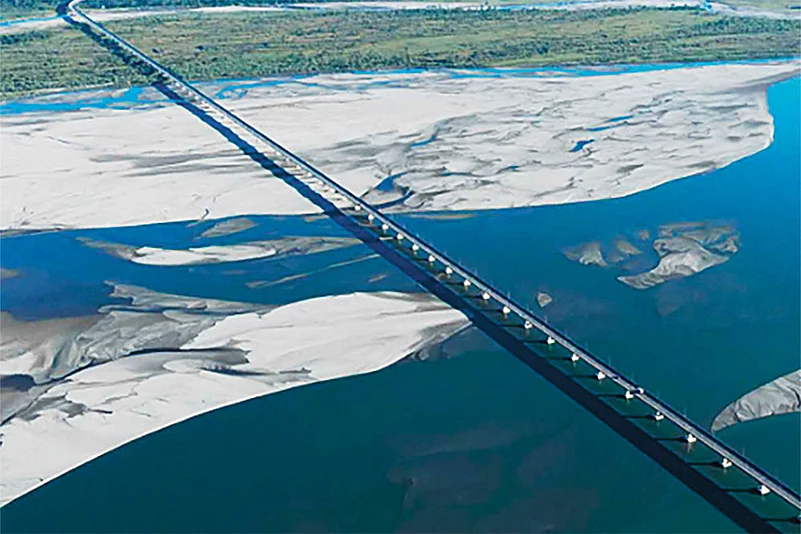
A closer look at the sectorial breakdown of the MoUs reveals the diverse and dynamic nature of the investments being funneled into Assam. For instance, the industrial sector alone attracted an investment commitment of INR 90,035 crore. This figure is a testament to the trust that major industry players have in Assam’s industrial ecosystem. The power sector is another major beneficiary, with investments amounting to INR 83,187 crore. This significant pledge will not only modernize Assam’s energy infrastructure but also facilitate reliable power supply to fuel further industrial activities and boost overall economic growth.
In the realm of natural resources, the mining, and minerals sector received INR 46,488 crore in commitments, while Central Public Sector Enterprises (PSEs) accounted for INR 34,211 crore. The information technology (IT) sector, despite being relatively nascent in Assam, saw an investment pledge of INR 4,786 crore, signaling the state’s ambition to evolve into a tech-savvy hub. Similarly, the environment and forest sector received INR 4,401 crore, a figure that reflects a growing awareness of sustainable development and ecological conservation as integral parts of industrial progress.
The commitment to human capital and social infrastructure is equally noteworthy. Investments in education reached INR 3,901 crore, which will be critical for nurturing a skilled workforce capable of sustaining future growth. The finance sector committed INR 3,000 crore, while the health sector saw a pledge of INR 2,562 crore, ensuring that critical social services are bolstered alongside industrial expansion. Culture and tourism, vital for promoting Assam’s heritage and generating ancillary economic benefits, garnered INR 2,500 crore and INR 2,068 crore, respectively. These figures not only affirm the economic value of Assam’s rich cultural legacy but also its potential to become a major tourist destination.
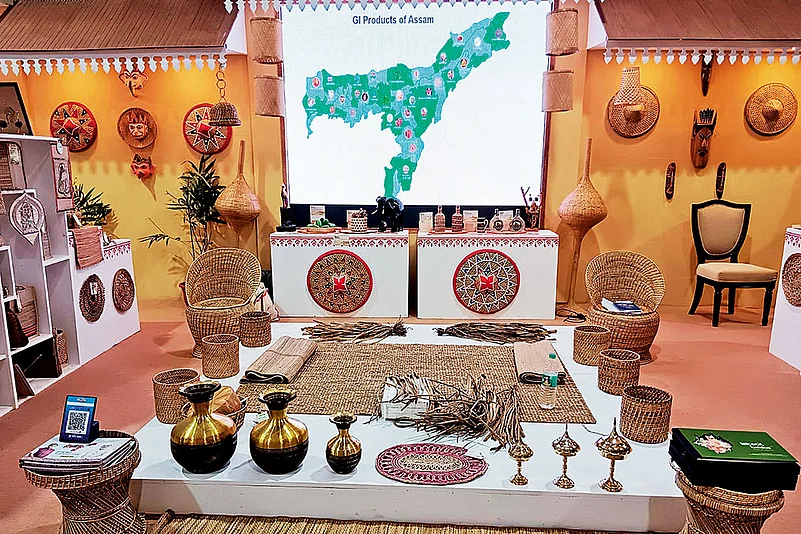
Multi-faceted Strategy
Other sectors, though representing relatively smaller figures, are no less significant in the larger development mosaic. Animal husbandry received INR 1,176 crore, highlighting the importance of agriculture and livestock in the region. Meanwhile, cooperative initiatives, housing and urban development, and skill development were allocated INR 1,000 crore, INR 500 crore, and INR 455 crore, respectively. Labour, handloom and textiles, and agriculture were also recognized, with commitments of INR 450 crore, INR 330 crore, and INR 232 crore, respectively. Additionally, sectors like transport, science and technology, and water resources received investments of INR 220 crore, INR 97 crore, and INR 21 crore, respectively.
These monumental figures are not just numbers on paper — they represent a multi-faceted strategy designed to catapult Assam into a new era of prosperity. The sheer scale of investment pledges reflects a broad consensus among stakeholders that Assam is uniquely positioned to serve as a gateway to Northeast India and Southeast Asia. With robust infrastructure development plans, a favourable business environment, and a government that is committed to rapid and inclusive progress, Assam is emerging as a magnet for investment.

The outcomes of the summit will have far-reaching implications for the state. For one, the infusion of capital across diverse sectors is expected to generate thousands of new jobs, significantly reducing regional unemployment and catalysing overall socio-economic development. The focus on infrastructure — evident from major investments in roads, railways, and energy projects — will not only enhance connectivity within Assam but also integrate the state more effectively into national and international trade networks. Furthermore, the substantial commitment to education and skill development will empower the local workforce, enabling them to participate actively in the state’s industrial evolution.
Another critical aspect of these outcomes is their role in fostering sustainable growth. With dedicated investments in renewable energy, environmental conservation, and technology-driven initiatives, the summit has laid a strong foundation for a future that balances industrial progress with ecological responsibility. This integrated approach is particularly important in today’s global economic climate, where sustainability and innovation are key drivers of long-term success.
In essence, the outcomes of the Advantage Assam 2.0 summit signal a new dawn for Assam—one characterized by transformative investments, comprehensive infrastructure development, and an inclusive growth model that benefits every segment of society. As these MoUs move from the negotiation stage to actual implementation, they will set in motion a cycle of economic activity that is expected to redefine Assam’s role in India’s economic landscape, making it a premier destination for industrial and business investments well into the future.
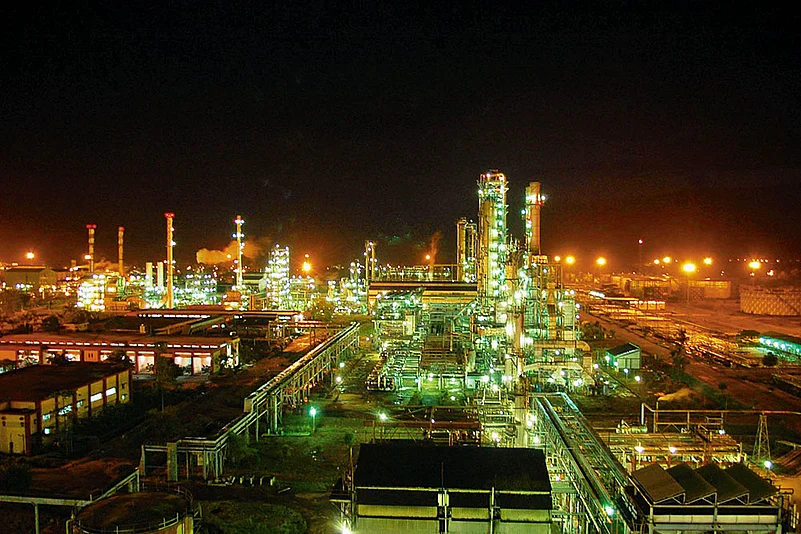
Investment Follow-Up: Ensuring Tangible Outcomes
A cornerstone of the Advantage Assam 2.0 summit was not only the impressive volume of investment commitments but also the robust follow-up mechanism that the Government of Assam has put in place to ensure these commitments translate into real, actionable projects. With a staggering array of MoUs signed across various sectors, the state government has recognized that the next critical step is to convert these pledges into tangible, transformative outcomes for the people of Assam.
To achieve this, the Chief Minister’s Office has established a dedicated Investment Tracking and Facilitation Unit. This unit is designed to serve as the nerve centre for monitoring and executing the projects endorsed at the summit. Its primary objective is to maintain a transparent, accountable, and efficient process that ensures every signed MoU is diligently followed up. Through this system, periodic reporting, detailed progress reviews, and strategic oversight are provided, ensuring that no project falls through the cracks.

One of the key features of this follow-up mechanism is its multi-tiered approach to accountability. Regular review meetings are scheduled, where representatives from the state government, industry experts, and project stakeholders come together to assess progress against predefined milestones. These meetings are not just routine; they are structured to facilitate in-depth discussions about any hurdles encountered, enabling quick course corrections. For instance, if a project faces delays due to bureaucratic bottlenecks or logistical challenges, the task force can immediately mobilize resources or reallocate responsibilities to keep the project on track.
Transparency is another critical pillar of the follow-up process. In an era where investor confidence is paramount, the government has committed to publishing regular progress reports. These reports, accessible via a dedicated public portal, provide real-time updates on the status of each project. They include key performance indicators, timelines, and any changes in investment scope or expenditure. This transparency not only instills confidence among investors but also reassures local communities that the state is committed to converting investment promises into actual development.
Furthermore, the follow-up mechanism integrates advanced digital tools to track the implementation of each project. A centralized dashboard consolidates data from various sectors—ranging from infrastructure and energy to technology and health—offering a comprehensive view of the investment landscape in Assam. This digital integration is crucial for ensuring that all projects are aligned with the broader economic goals of the state. It facilitates cross-sector coordination, enabling stakeholders to identify synergies between different projects. For instance, improved road connectivity can accelerate the implementation of industrial projects by reducing logistics costs and enhancing accessibility, thereby multiplying the benefits of each investment.

Robust Tracking System
The impact of these follow-up mechanisms extends far beyond the immediate execution of projects. They are designed to create a sustainable ecosystem that continuously fosters investor confidence. When investors see that the government is not only capable of attracting massive investment commitments but also effective in ensuring their execution, it sends a powerful signal to the global market. This, in turn, can lead to additional rounds of investment, as the state becomes known as a reliable and proactive partner in economic development.
Moreover, the robust tracking system has a direct bearing on Assam’s present and future economic landscape. In the short term, it ensures that the projects, which together account for investments in the hundreds of thousands of crores, begin to generate employment, stimulate local businesses, and improve infrastructure. In the long run, it sets the stage for sustainable industrial growth, transforming Assam into a hub for innovation, technology, and manufacturing. The resulting multiplier effect will not only bolster the state’s GDP but will also contribute significantly to job creation and overall socio-economic upliftment.
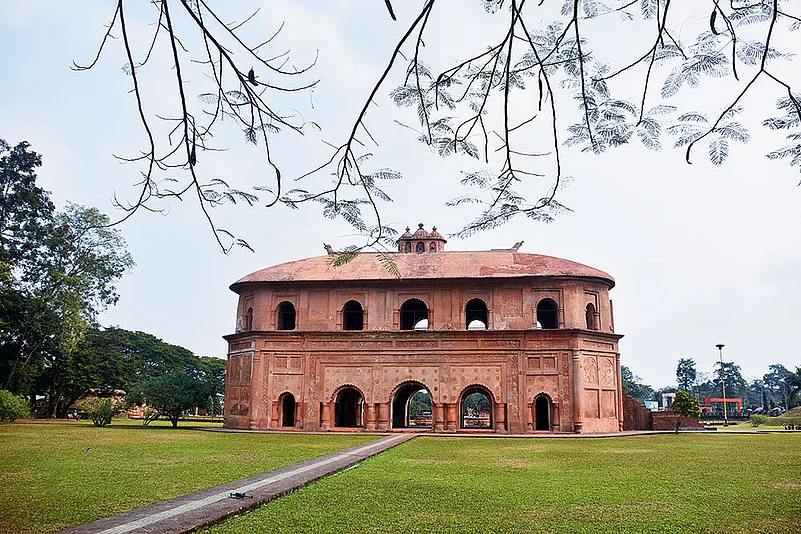
For example, the follow-up mechanism is crucial for the successful implementation of flagship projects like the Namrup IV Mega Integrated Urea Project, which alone has an investment commitment of INR 12,000 crores. Likewise, massive investments in infrastructure, telecommunications, and energy—all of which were major highlights of the summit—require stringent monitoring to ensure that they are completed within set timelines and deliver the promised benefits. With the Chief Minister’s Office at the helm, every stage of these projects is subject to meticulous scrutiny, which helps in mitigating risks and ensuring that funds are utilized effectively.
Additionally, the follow-up framework fosters a culture of collaboration between the public and private sectors. By actively engaging industry leaders and establishing a clear line of communication, the government creates an environment where feedback is not only welcomed but actively sought. This collaborative approach ensures that any issues are promptly addressed, and best practices are shared across sectors, ultimately leading to a more resilient and adaptive investment ecosystem.
In summary, the Investment Follow-Up mechanism established under the Chief Minister’s Office is a game-changer for Assam. It ensures that the bold promises and significant investment commitments made at the Advantage Assam 2.0 summit are converted into real-world developments that drive sustainable growth. Through transparent reporting, rigorous monitoring, and advanced digital tracking, Assam is setting a new benchmark for accountability in public investment. This meticulous approach not only safeguards the interests of investors but also guarantees that the economic benefits of these investments reach every corner of the state, propelling Assam into a future of robust industrial growth and inclusive prosperity.
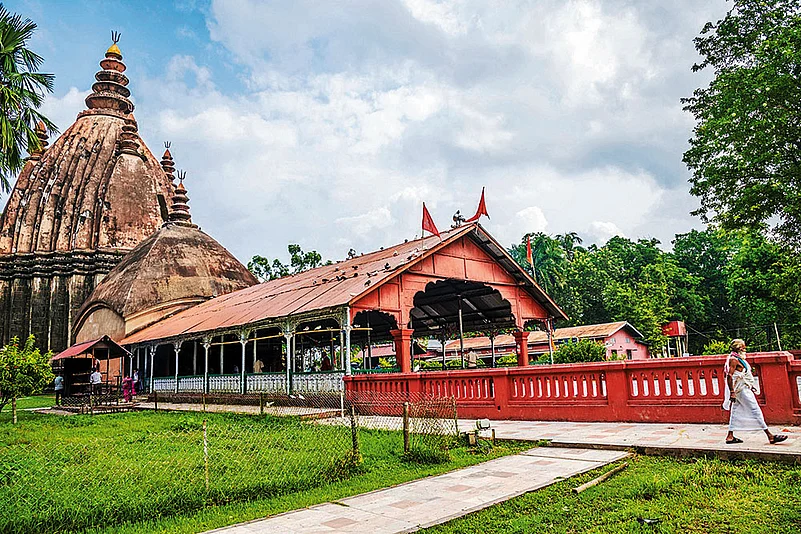
Assam’s Rise as an Economic Powerhouse
The Advantage Assam 2.0 summit has unequivocally set a new benchmark for economic summits, marking a turning point in the region’s industrial narrative and positioning Assam as a future economic powerhouse. Under the visionary leadership of Chief Minister Himanta Biswa Sarma and Prime Minister Narendra Modi, Assam is on a transformative journey, harnessing robust investments, global partnerships, and strategic policy frameworks to propel its economic resurgence.
At the heart of this transformation is the recognition that Assam, historically renowned for its tea and natural resources, is evolving into a modern industrial hub. The summit showcased an array of high-impact projects — from infrastructure upgrades to advanced technological initiatives — demonstrating a well-rounded approach to economic development. Prime Minister Modi’s emphatic words, “Assam’s journey is one of bold reforms and limitless possibilities,” resonated strongly with the audience, reaffirming that the state is not only ready for the future but is actively shaping it. His support has provided a robust endorsement of Assam’s investment potential, reinforcing the idea that when visionary leadership meets proactive governance, transformative change becomes inevitable.
Chief Minister Himanta Biswa Sarma, who has been a stalwart champion for the state’s development, played a pivotal role in orchestrating the success of the summit. His pragmatic yet ambitious approach to governance has been critical in creating an environment conducive to business and industrial growth. “With the Prime Minister’s blessings and our relentless commitment, Assam is emerging as a beacon of progress in Northeast India,” Sarma declared during his address at the summit. This confident outlook has not only inspired local stakeholders but has also attracted global investors who now see Assam as a key driver of India’s broader economic progress.

The summit’s outcomes, featuring an unprecedented signing of 305 MoUs totalling INR 2.81 lakh crore and district-level MoUs spread across all 35 districts, are a testament to the effectiveness of this leadership. These figures reflect a comprehensive strategy where investment is not concentrated in urban hubs alone but is distributed across the state, ensuring that the benefits of growth are inclusive and far-reaching. The sectoral commitments—spanning industries, power, mining, IT, and beyond—highlight the breadth of Assam’s industrial potential and its readiness to integrate into global supply chains. This diversification of investments is critical for a resilient and sustainable economic ecosystem.
Global partnerships, a key highlight of the summit, further illustrate Assam’s emergence as a global economic player. With participation from 75 countries, 67 heads of missions, and engagement from 12 bilateral chambers, the international community has recognized Assam’s strategic importance. These partnerships are not only fostering technology transfer and innovation but also ensuring that Assam becomes a gateway to Southeast Asia—a role that is pivotal for India’s Act East Policy. The momentum generated by these global engagements is expected to attract further foreign direct investments, fueling a cycle of continuous growth and development.
The proactive investment in infrastructure projects is another cornerstone of Assam’s future success. With significant allocations toward enhancing roadways, rail connectivity, and digital infrastructure, the state is rapidly bridging historical gaps in connectivity. This focus on infrastructure, spearheaded by Union Ministers like Nitin Gadkari and Ashwini Vaishnaw, is transforming Assam into a hub where logistics and technology converge, thereby attracting businesses that value efficient connectivity and a reliable supply chain.

Moreover, the summit has underscored the importance of sustainable growth. Assam’s commitment to renewable energy projects, digital transformation initiatives, and modern industrial practices signals a future where growth is both robust and environmentally responsible. The integration of traditional industries, such as tea and handicrafts, with modern technology further demonstrates a model of inclusive growth where every sector of the economy contributes to a vibrant, sustainable future.
The strategic planning and follow-up mechanisms established by the state government have ensured that the promises made during the summit are not transient. With a dedicated Investment Tracking and Facilitation Unit under the Chief Minister’s Office, there is a clear roadmap for transforming investment pledges into tangible development outcomes. This diligent approach to project execution not only builds investor confidence but also guarantees that the economic benefits reach every corner of the state, thereby reinforcing the foundations for long-term prosperity.
The impact of these initiatives will be felt across all sectors of society. By generating thousands of new jobs, enhancing public infrastructure, and fostering a culture of innovation, Assam is poised to witness an economic renaissance. This transformation will create a ripple effect, elevating the quality of life for its citizens and positioning the state as a critical contributor to India’s national growth narrative.
In conclusion, the Advantage Assam 2.0 summit has not merely been an event — it has been a catalyst for change, setting the stage for Assam’s rise as an economic powerhouse. With visionary leadership from Chief Minister Himanta Biswa Sarma and Prime Minister Narendra Modi, coupled with robust investments, global partnerships, and a commitment to inclusive growth, Assam is on the threshold of a new era. This new era is defined by modernity, sustainability, and an unwavering dedication to progress, making Assam the best state in India for business and industrial investments and a beacon of hope for the entire nation.



















